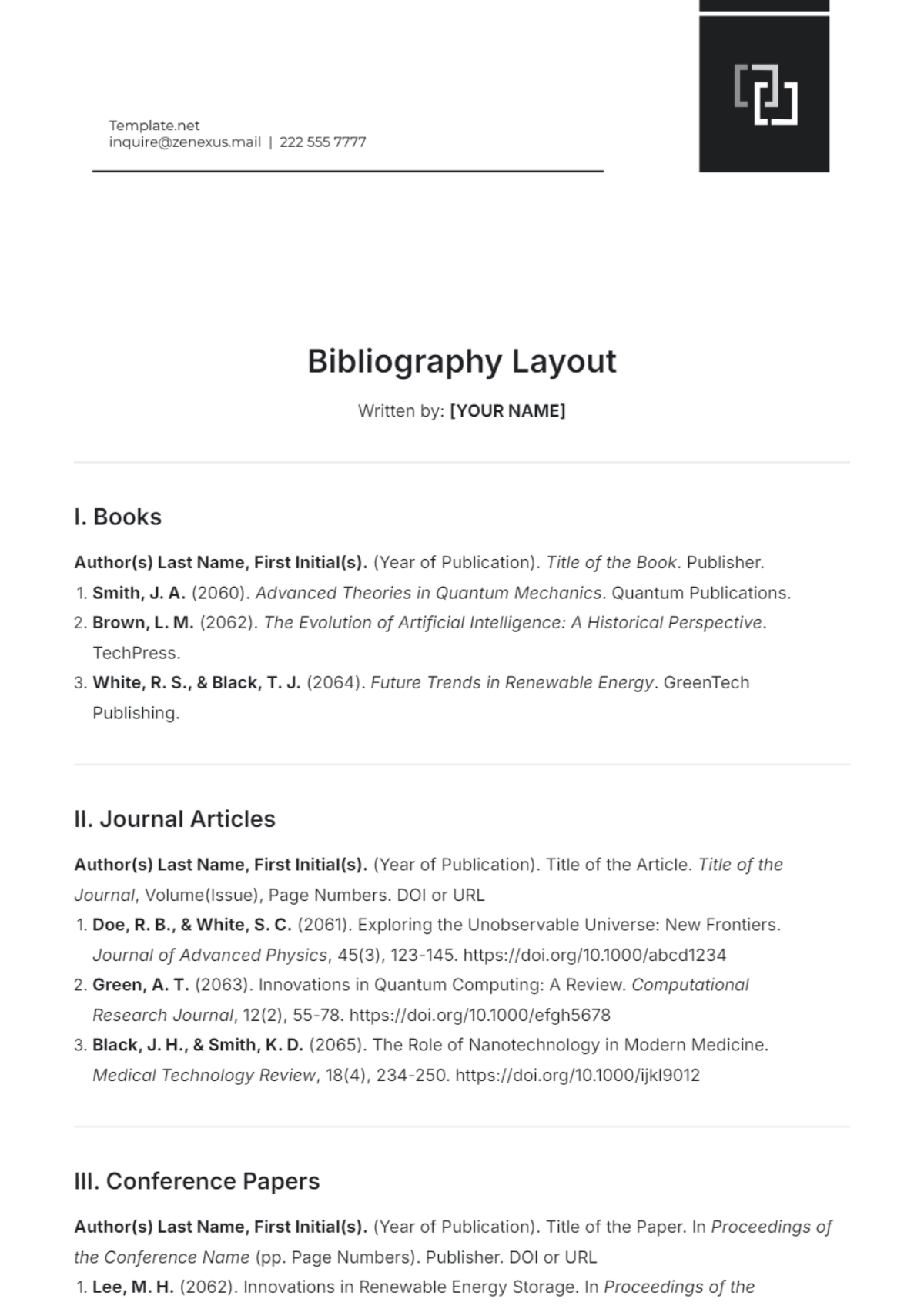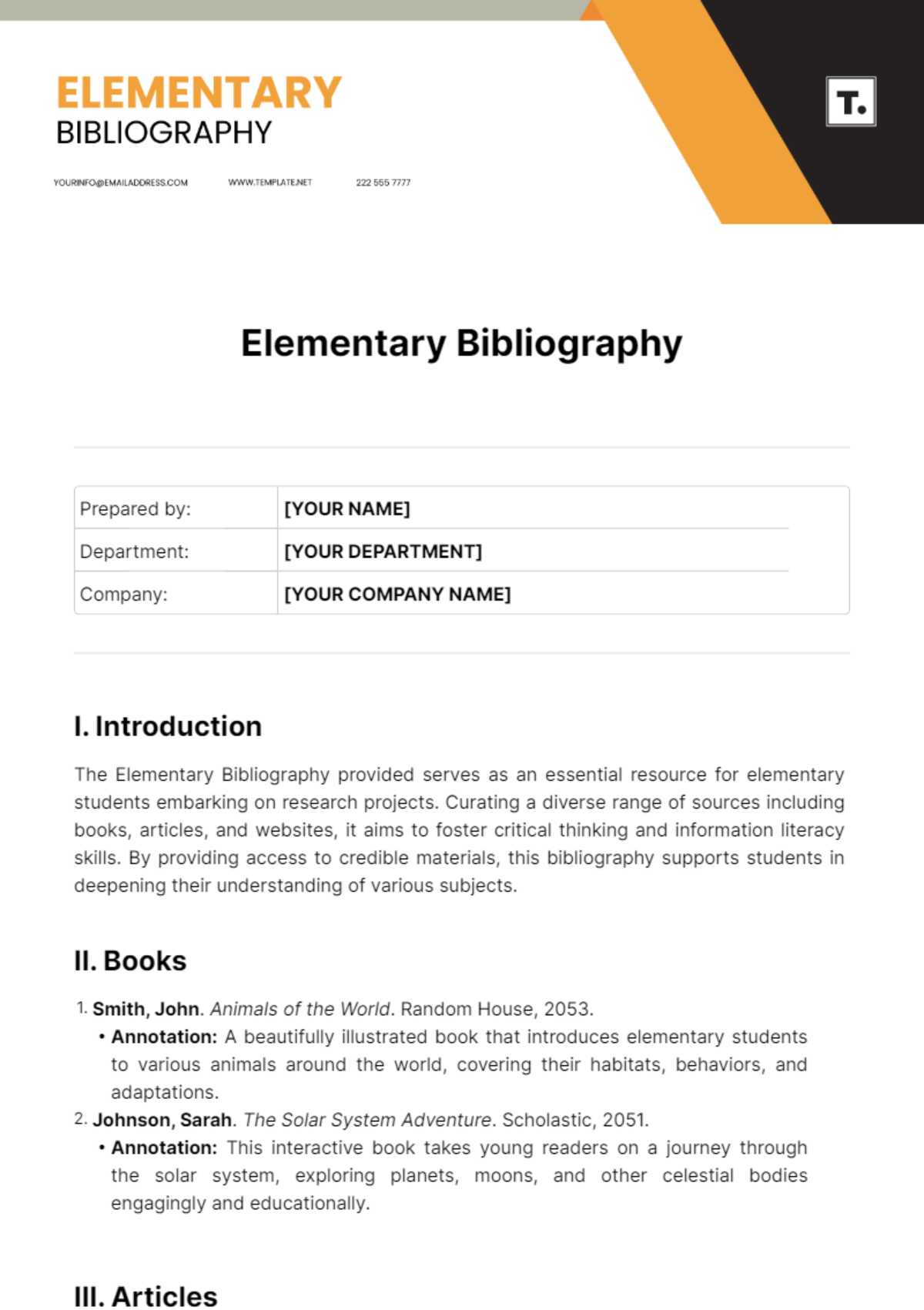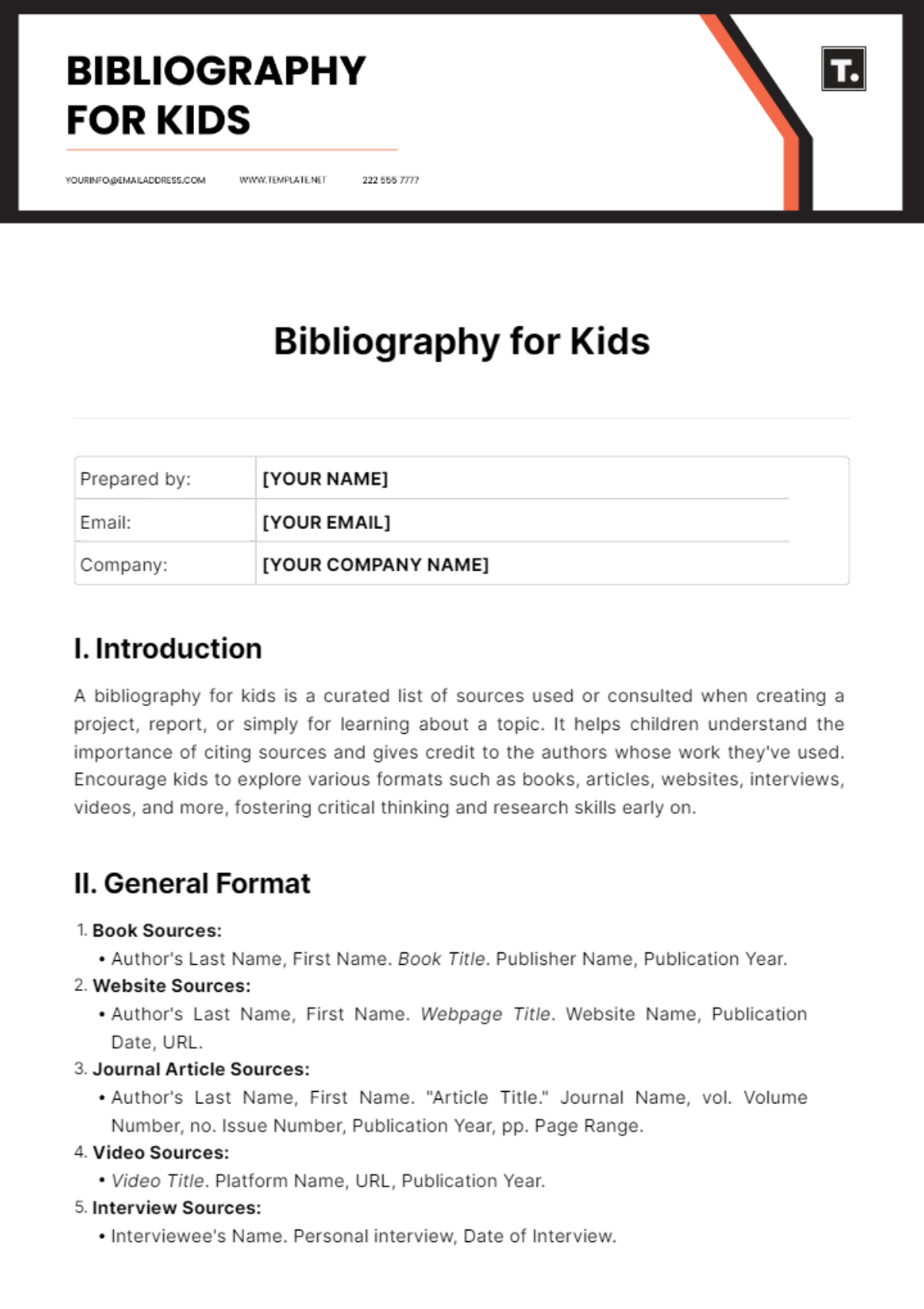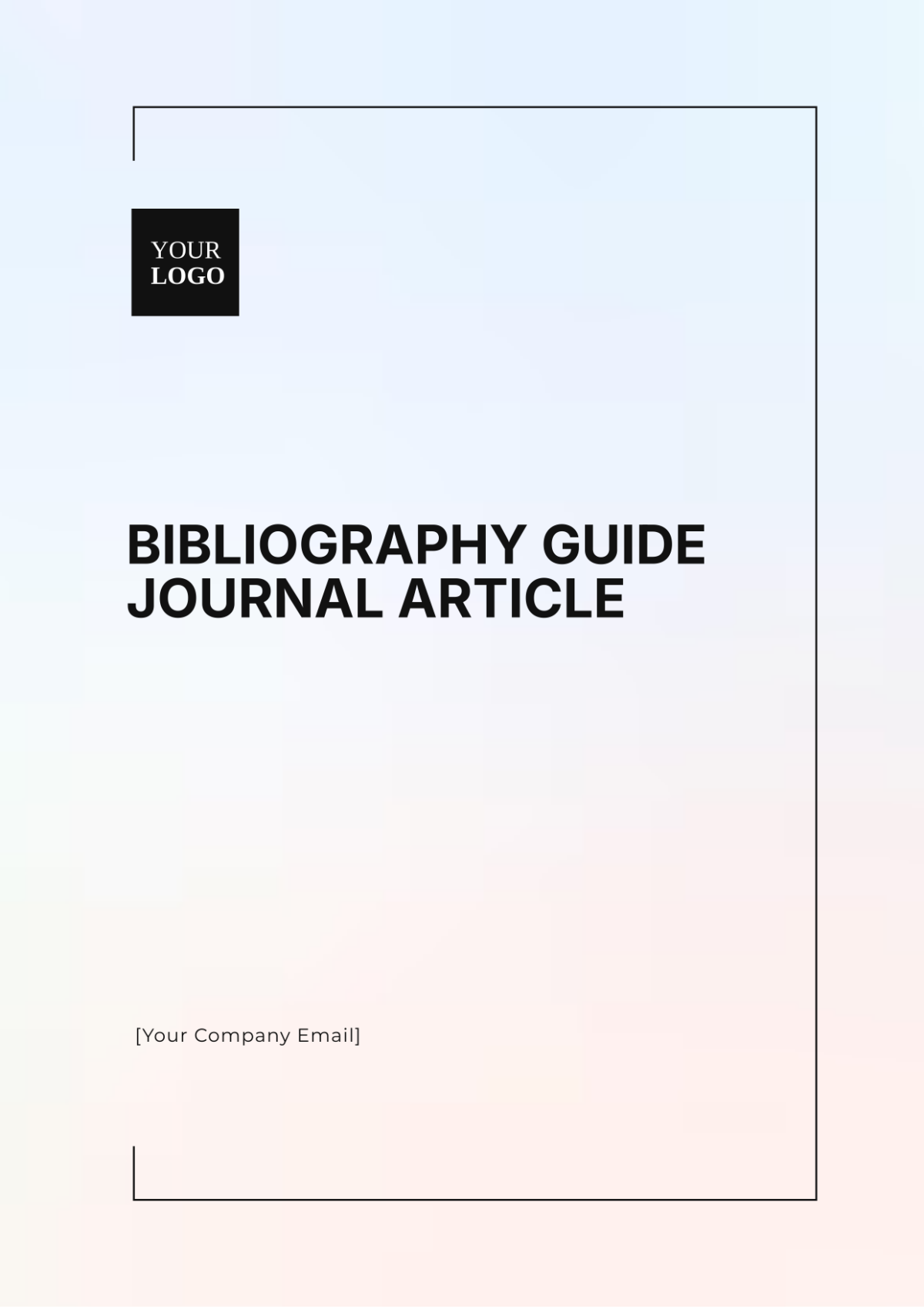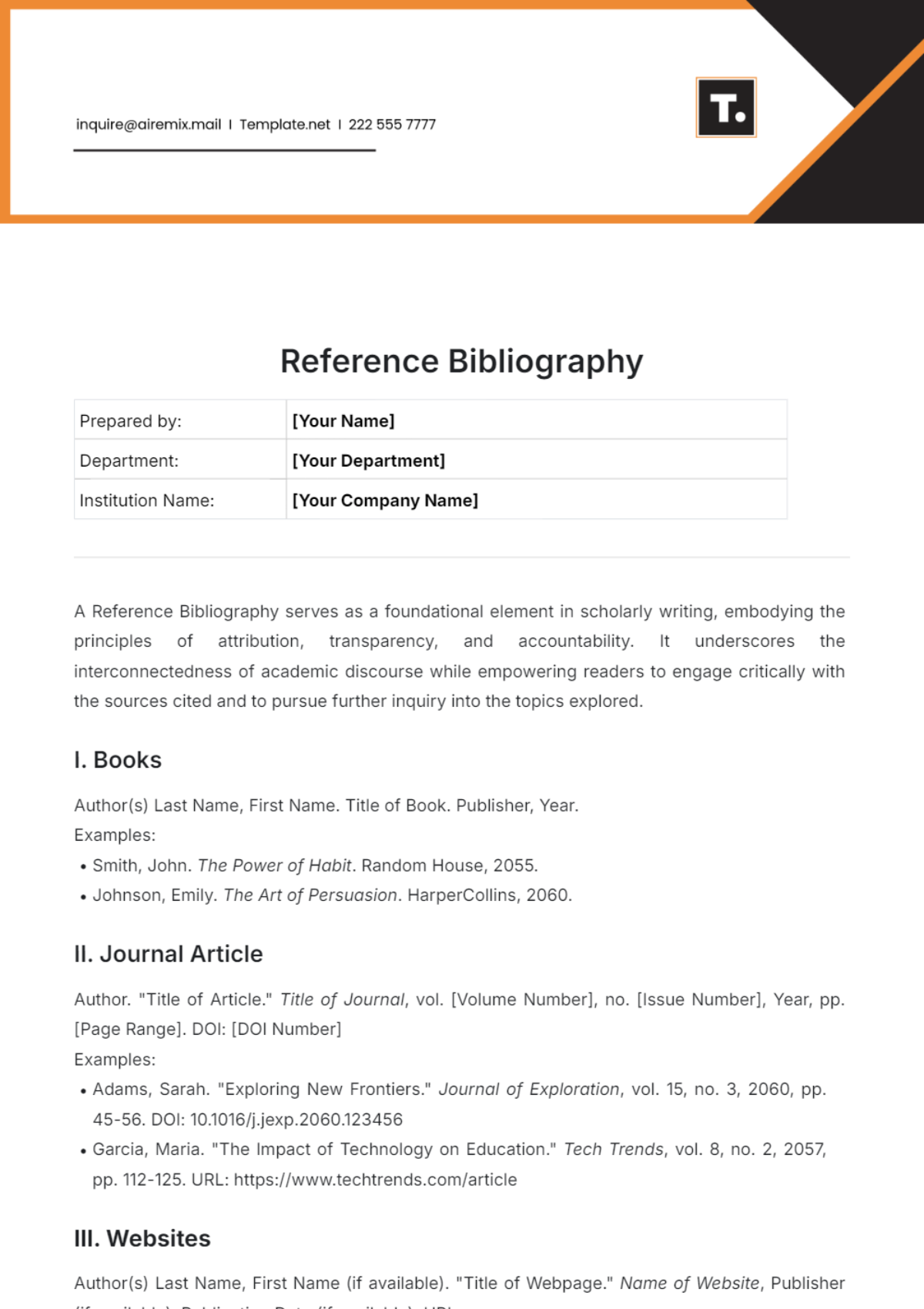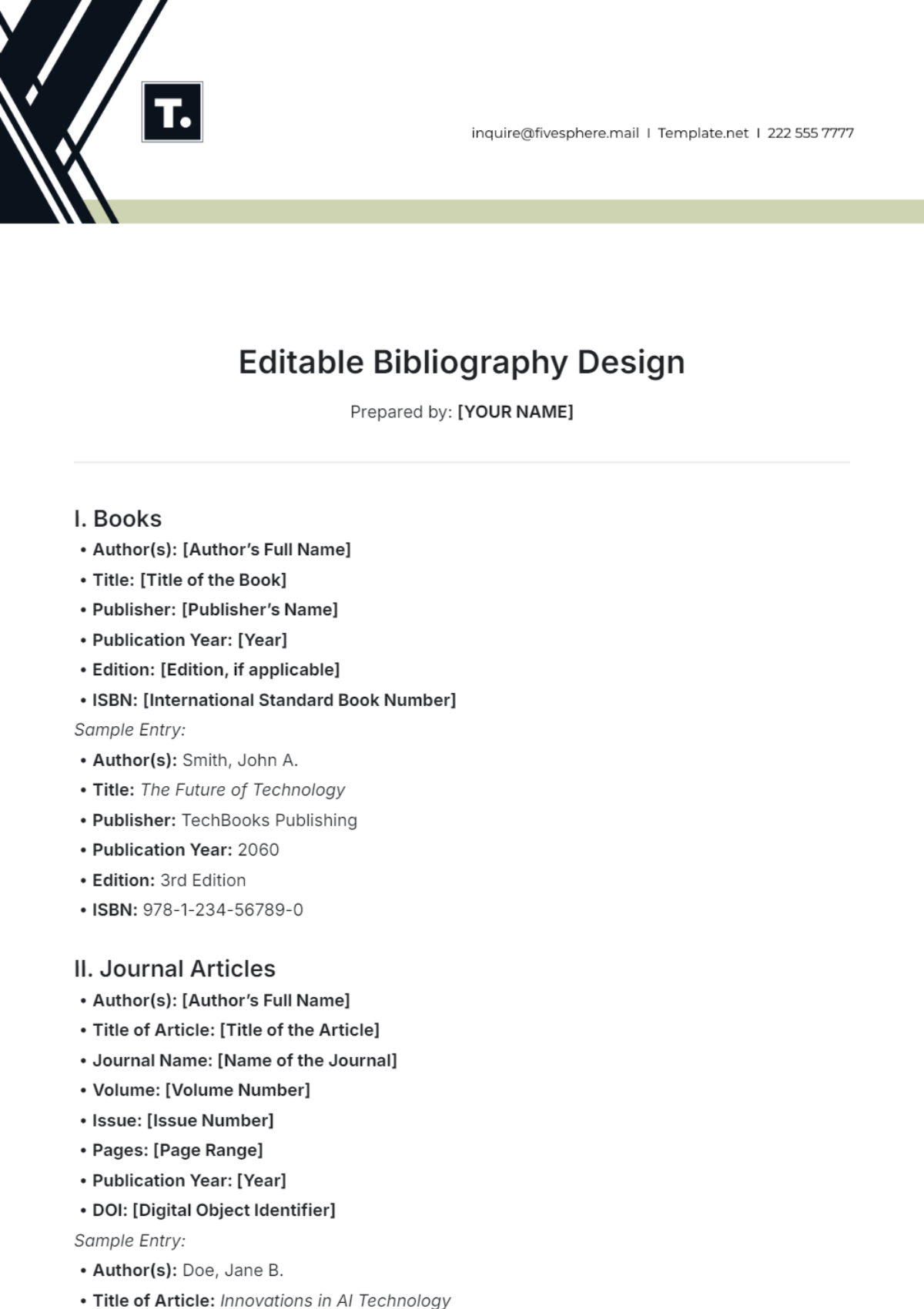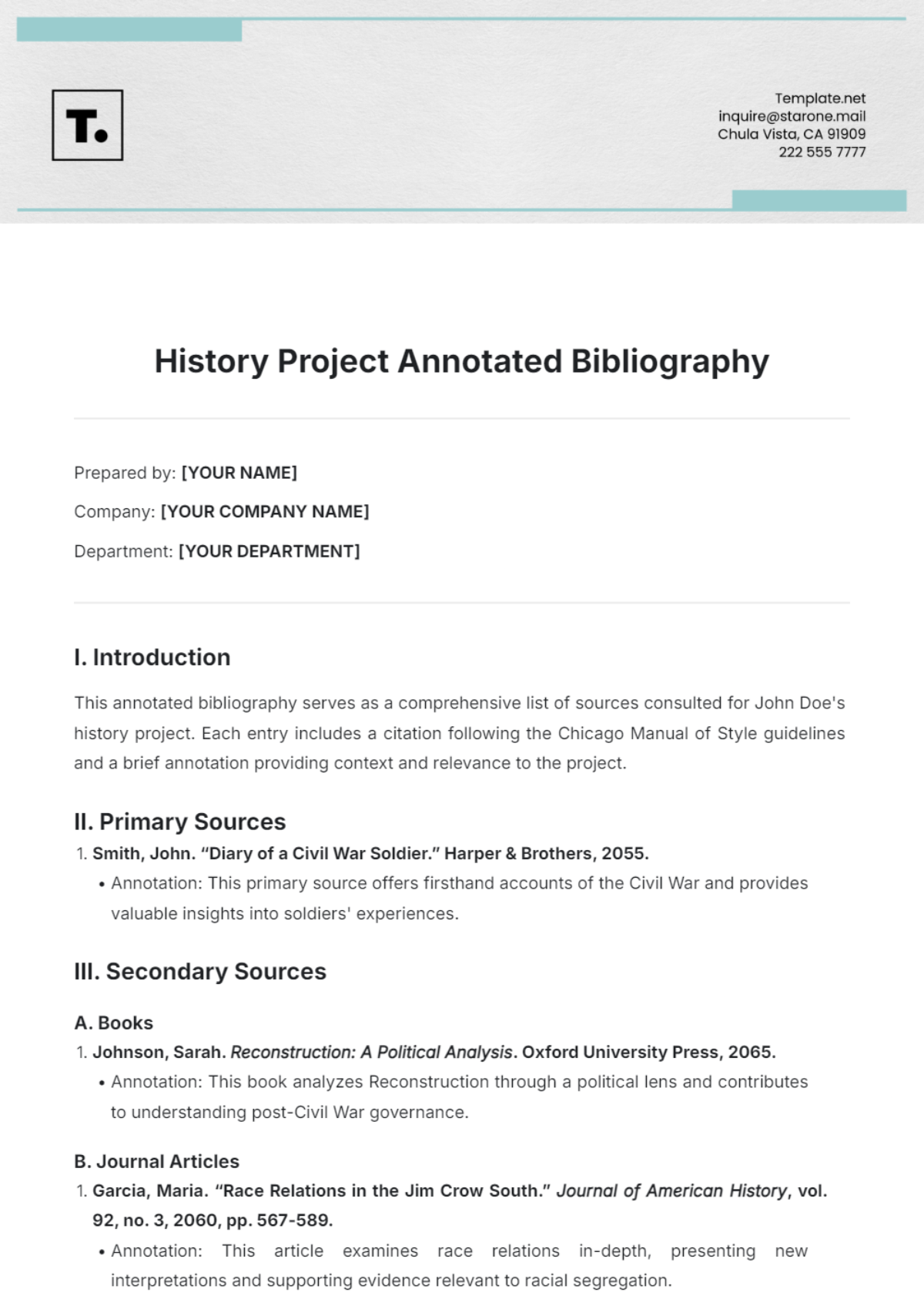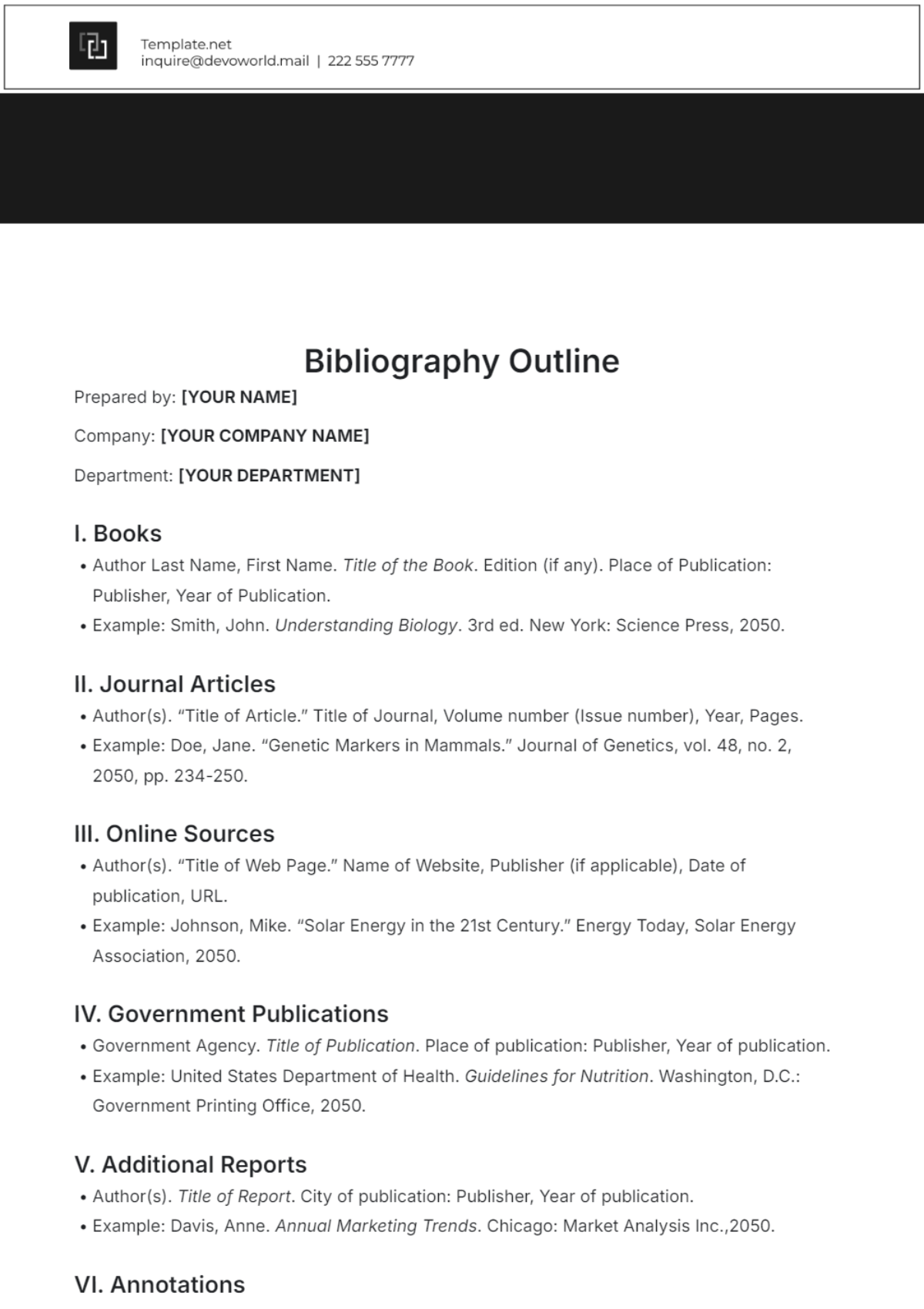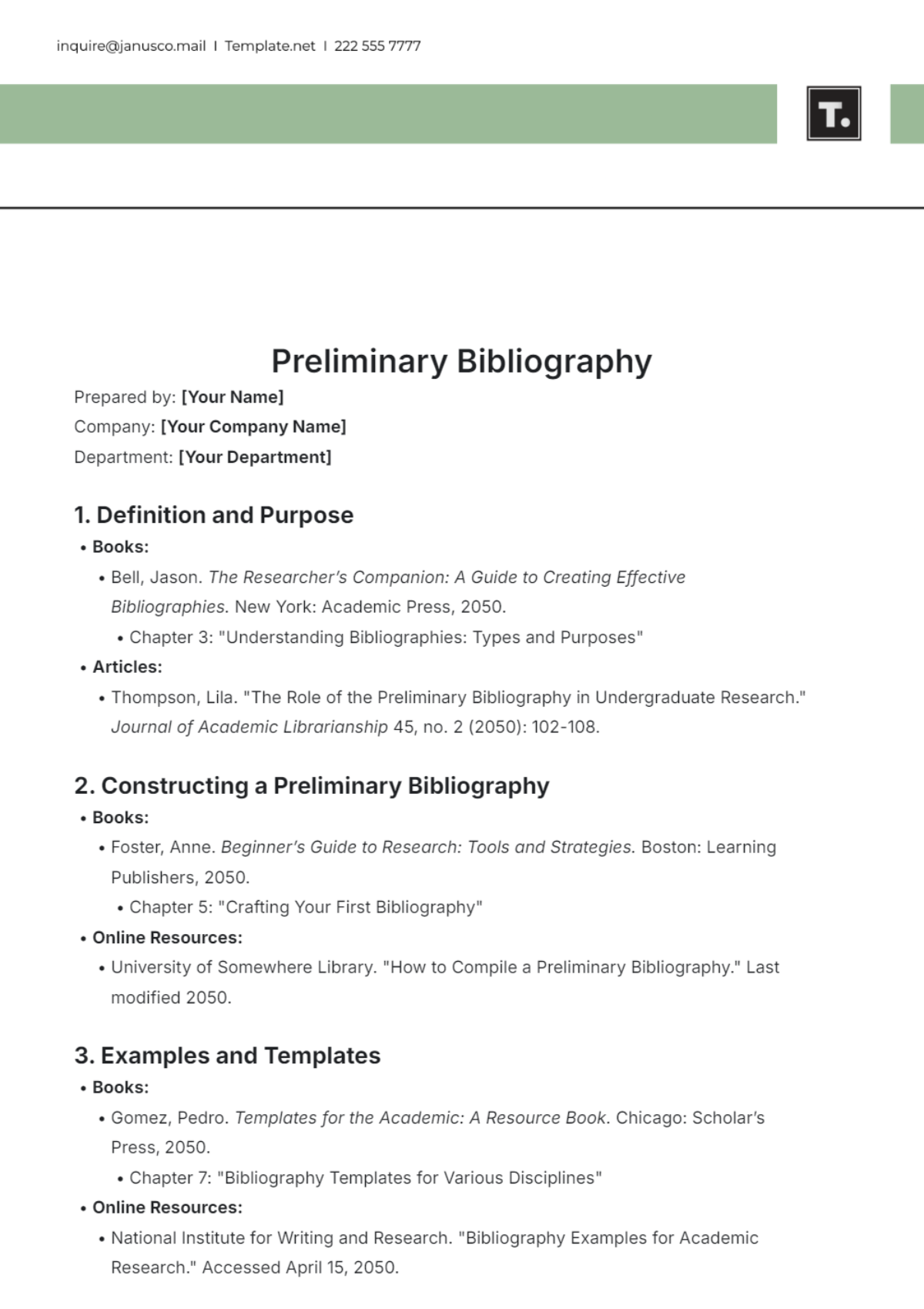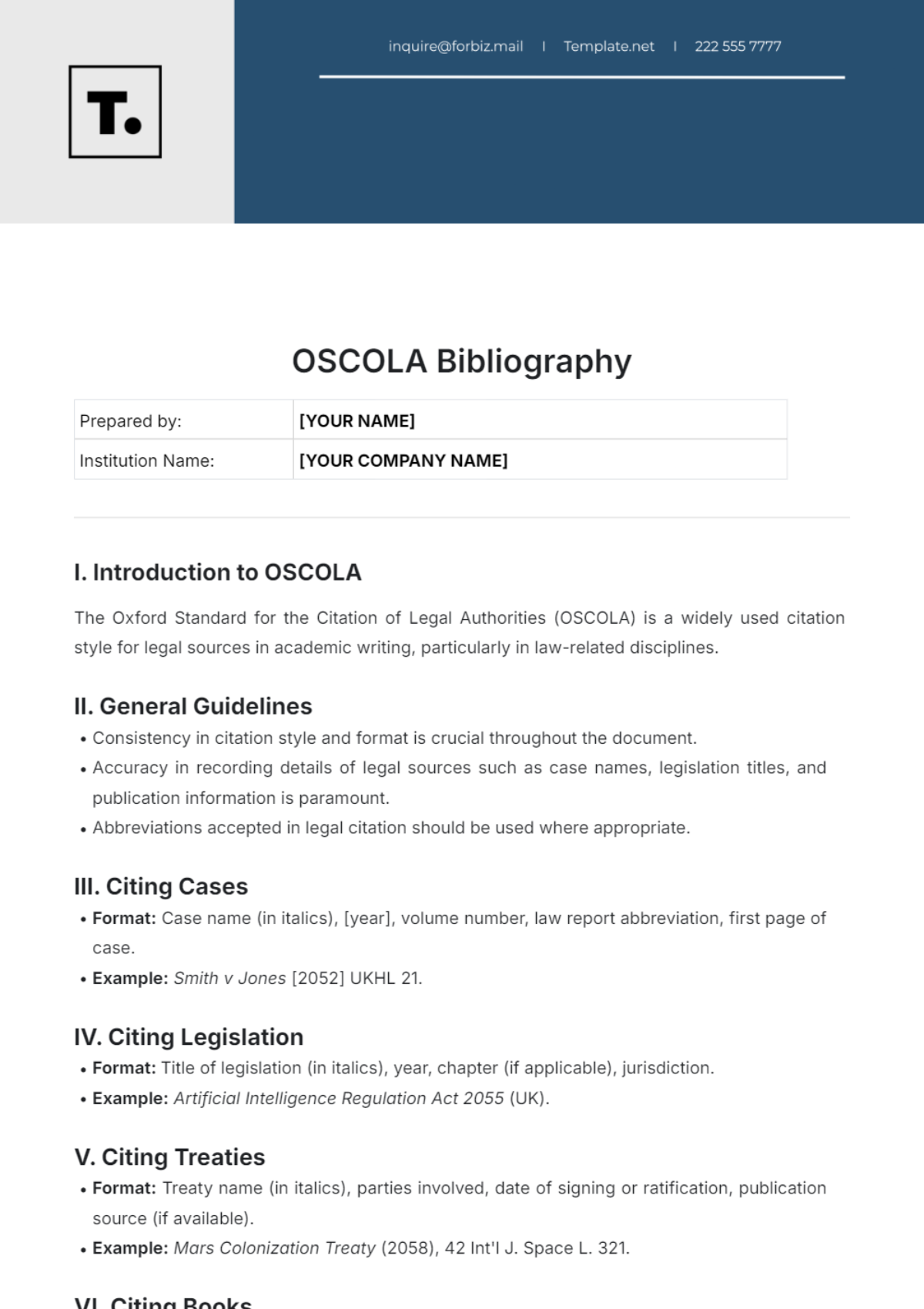Teaching Annotated Bibliography
Prepared by: | [YOUR NAME] |
Department: | [YOUR DEPARTMENT] |
Company: | [YOUR COMPANY NAME] |
I. Introduction
This Teaching Annotated Bibliography has been meticulously crafted as a comprehensive collection of carefully selected resources, specifically designed to aid educators in improving and refining their teaching methodologies. The compilation prominently features an array of educational materials, including books, scholarly articles, informative websites, and instructional videos. Each listed resource is accompanied by a brief annotation or summary, providing a clear and concise overview designed to assist educators in quickly assessing the relevance and utility of each item in enhancing their instructional practices.
II. Objective
The primary aim of this bibliography is to offer educators a comprehensive and convenient resource that includes materials that are pertinent and useful for enhancing their knowledge and practical application in various specific subject areas, courses, or teaching methodologies. This is intended to assist them effectively in broadening their educational practices and expertise.
III. Citation Style
The style of the American Psychological Association (APA) is utilized for all entries to guarantee consistency and clarity in the process of referencing.
IV. Organization
Entries are systematically arranged in alphabetical order based on the surname of the primary author; in instances where an author is not specified, the organization is done by the title of the work.
V. Annotation Format
Annotations deliver a concise summary or assessment of each source, underlining how relevant they are and their potential usefulness specifically for educators, making it easier to discern the value of the materials.
VI. Bibliography Entries
Books
Rowling, J. K. (2052). The Art of Wizardry: A Comprehensive Guide. Scholastic.
Annotation: This book offers a deep dive into the world of wizardry, providing educators with insights into incorporating imaginative storytelling and magical elements into their teaching practices.
Articles
Smith, A. B. (2055). The Impact of Digital Learning Technologies on Student Engagement. Journal of Educational Technology, 10(3), 112-125.
Annotation: Smith's article explores the effects of digital learning tools on student engagement, offering valuable insights for educators seeking to leverage technology effectively in the classroom.
Websites
Teach.com. (2053). Effective Classroom Management Strategies. https://www.teach.com/classroom-management/strategies/
Annotation: This webpage provides practical tips and strategies for effective classroom management, offering educators actionable advice for creating a positive learning environment.
Videos
Khan, S. (2051). Introduction to Algebra: Linear Equations. [Khan Academy].
Annotation: Khan's video tutorial offers a comprehensive introduction to algebraic concepts, making it a valuable resource for educators teaching mathematics at various levels.
VII. Conclusion
This Teaching Annotated Bibliography offers educators a comprehensive array of resources to support and enhance their teaching endeavors. By engaging with these materials, educators can enrich their pedagogical strategies and foster more effective learning environments.





